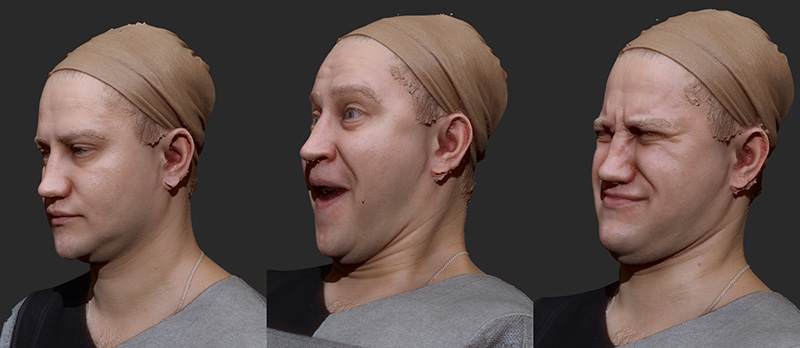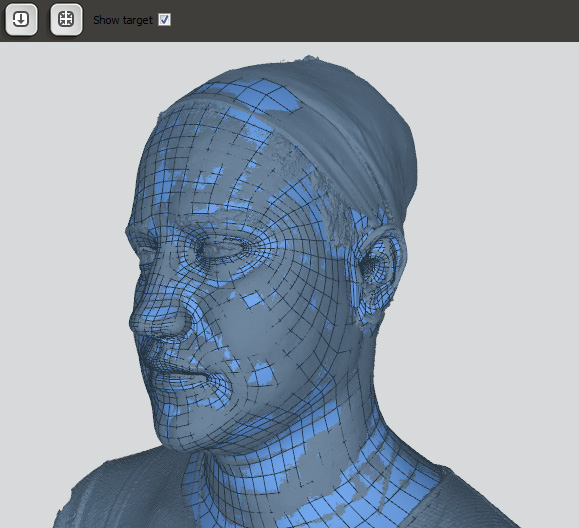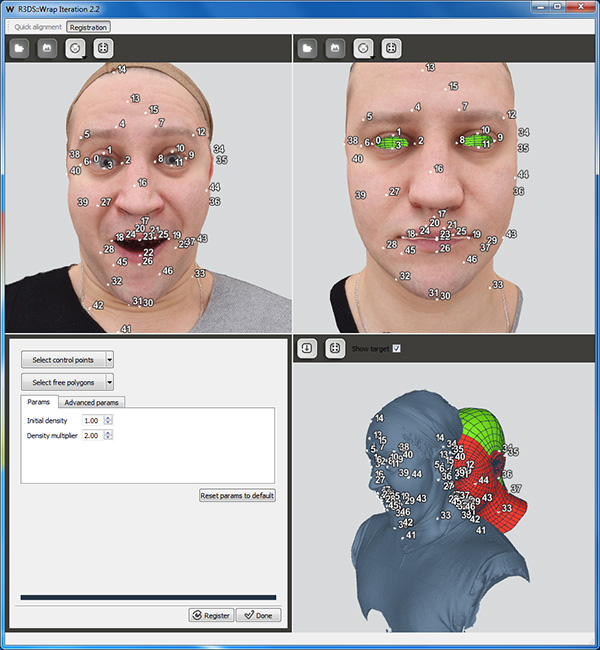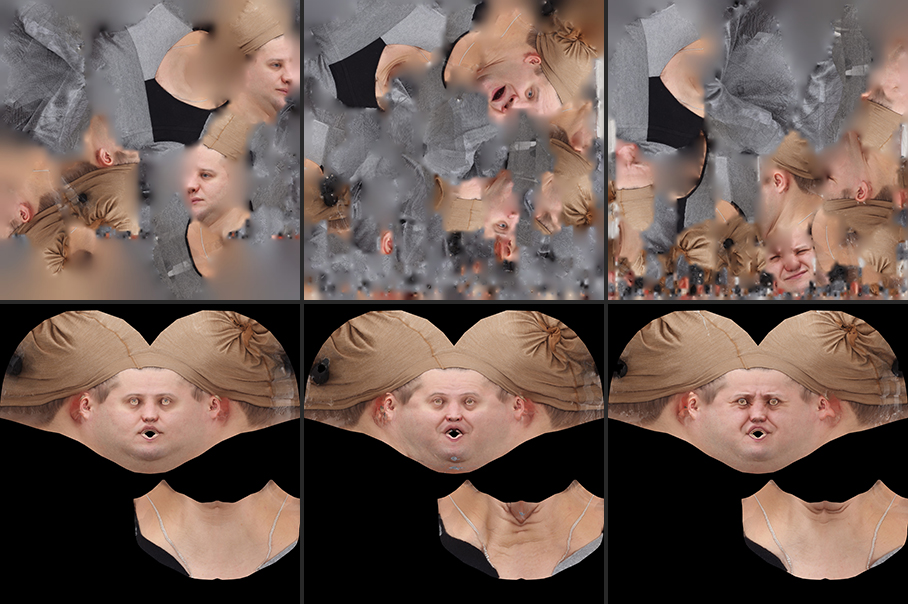The BRAWL² Tournament Challenge has been announced!
It starts May 12, and ends Oct 17. Let's see what you got!
https://polycount.com/discussion/237047/the-brawl²-tournament
It starts May 12, and ends Oct 17. Let's see what you got!
https://polycount.com/discussion/237047/the-brawl²-tournament
Wrap - topology transfer tool

Hey guys,
I'm new to this forum. During last year i was interested in processing 3D-scanning data and especially in non-rigid registration. That brought me to development of my tool for transfering existing topology onto a scan. I guess that some big studios do have such in-house tools but my goal was to do something simple and affordable.
So let me share with you my latest tests. That would be great if you guys can give some feedback.
I started with a set of free 3D-scans made with Agisoft and kindly provided by my friends from DigitalForms. You can get the first scan here.

I decimated them down to 300K polygons and also reduced texture resolution down to 4000x4000.
As a basemesh I took an existing topology of a head from open-source project MakeHuman.

I loaded both the scan and the topology into my tool Wrap. Wrap tries to reproduce the shape of the scan as close as possible. Optionally it can use some user-specified control points. There is also an option to specify groups of polygons that should not be wrapped. For example the back side of the head of the scan has a stocking on it and does not reproduce the real shape. So I specified corresponding polygons on the basemesh as Free. I do the same with eyes and mouth sockets.

The computaton takes about 10 minutes and at the end I get my basemesh wrapped around the scan.

After that I transfered a texture from scan to basemesh using xNormal.
Now I can load other scans into Wrap. This time I can use projected texture as a reference for control points.


After that I use ZBrush to subdivide basemeshes and re-project details from original scans.
As all the models shares the same point numbers and UV coordinates I can now blend between them.

Here is the final result with shape and textures blending.

Please note that I'm not a 3D-artist and during this work no artistic or modeling work were needed except for specifying control points and few touches of relaxation brush on lips.
I really hope for your feedback! Feel free to try the software on my website and ask any questions!
Replies